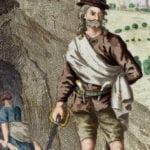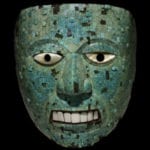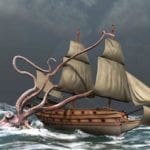 Technology
Technology  Technology
Technology  Humans
Humans 10 Everyday Human Behaviors That Are Actually Survival Instincts
 Animals
Animals 10 Animals That Humiliated and Harmed Historical Leaders
 History
History 10 Most Influential Protests in Modern History
 Creepy
Creepy 10 More Representations of Death from Myth, Legend, and Folktale
 Technology
Technology 10 Scientific Breakthroughs of 2025 That’ll Change Everything
 Our World
Our World 10 Ways Icelandic Culture Makes Other Countries Look Boring
 Misconceptions
Misconceptions 10 Common Misconceptions About the Victorian Era
 Mysteries
Mysteries 10 Strange Unexplained Mysteries of 2025
 Miscellaneous
Miscellaneous 10 of History’s Most Bell-Ringing Finishing Moves
 Technology
Technology Top 10 Everyday Tech Buzzwords That Hide a Darker Past
 Humans
Humans 10 Everyday Human Behaviors That Are Actually Survival Instincts
 Animals
Animals 10 Animals That Humiliated and Harmed Historical Leaders
Who's Behind Listverse?

Jamie Frater
Head Editor
Jamie founded Listverse due to an insatiable desire to share fascinating, obscure, and bizarre facts. He has been a guest speaker on numerous national radio and television stations and is a five time published author.
More About Us History
History 10 Most Influential Protests in Modern History
 Creepy
Creepy 10 More Representations of Death from Myth, Legend, and Folktale
 Technology
Technology 10 Scientific Breakthroughs of 2025 That’ll Change Everything
 Our World
Our World 10 Ways Icelandic Culture Makes Other Countries Look Boring
 Misconceptions
Misconceptions 10 Common Misconceptions About the Victorian Era
 Mysteries
Mysteries 10 Strange Unexplained Mysteries of 2025
 Miscellaneous
Miscellaneous 10 of History’s Most Bell-Ringing Finishing Moves
10 Eerie Native American Monsters
The story of American mythology begins long before European settlers set foot on North American soil. And contrary to popular belief, there’s more to Native American history than buffalo hunts, teepees, and feather headdresses. Hundreds of tribes from Alaska to Mexico (and beyond) nurtured an incredibly complex culture, including a mythological system that rivaled that of the ancient Greeks.
But if you thought Greek mythology was a bit edgy, you’ll find that even the most disturbing antics of Olympia’s ancient gods seem patently tasteful compared to the macabre legends associated with Native American mythology and culture. These monsters have haunted various corners of North America for thousands of years. Because their tradition was an oral one, many of the stories have variants as diverse as the people who still tell them, but they all have one thing in common: eerie details and gruesome facts that’ll make your skin crawl.
10Skinwalkers
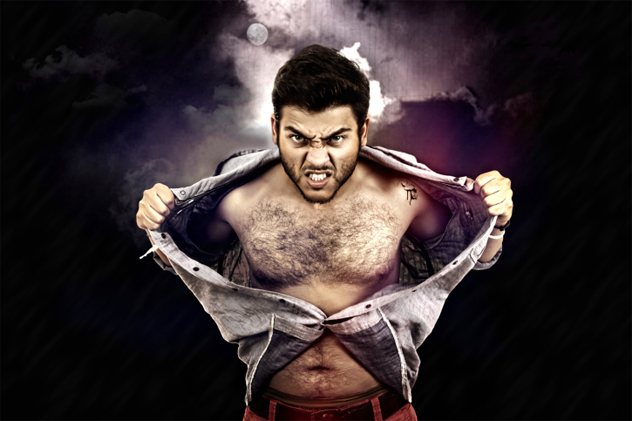
According to Navajo legend, skinwalkers are accomplished medicine men or witches who reach the highest level of priesthood but choose to use their powers for evil rather than good. Skinwalkers take the form of an animal for the purpose of inflicting pain on others. The initiation procedure is pretty tough—all prospective skinwalkers must kill a close relative. Once a prospective skinwalker passes that test, he gains immense magical powers, including shape-shifting abilities. These abilities enable skinwalkers to turn into any animal they choose, though their top choices are usually foxes, owls, coyotes, wolves, or crows—the most feared or revered animals in Navajo mythology.
Though skinwalker lore goes back into ancient Native American history, stories of the evil sorcerers still circulate today. Witnesses report seeing or hearing them knocking on windows or doors, peering through windows, or otherwise trying to frighten and inflict harm. Skinwalkers are immortal but, according to legend, it is possible to annihilate them: “Those who do track a skinwalker and learn of their true identity must pronounce the name of the evil one in full. Once this happens, the skinwalker will get sick or die for the wrongs they have inflicted against others.”
9Two-Face

With parallels among Sioux, Plains, and Omaha tribes, the two-faced monster (also known as Sharp Elbows) is a humanoid, two-faced person who delights in torturing and killing unsuspecting victims. Anyone who sets eyes on Two-Face’s second set of features will be killed or paralyzed by fear. Two-Face most often preys on children and pregnant women, usually killing them by stabbing them repeatedly with his razor-sharp elbows. According to some legends, Two-Face is a cannibal. In all legends, he gruesomely disfigures his victims before moving on.
In Lakota legends, Two-Face is most often a woman who’s been turned into a two-faced monster after trying to seduce the Sun god. According to these legends, one of the faces is beautiful and one is hideous, which to the Native Americans represents disharmony and a departure from tradition. Even in stories where Two-Face isn’t an evil monster out to torture the weak, she still represents nonconformity.
8Horned Water Serpent
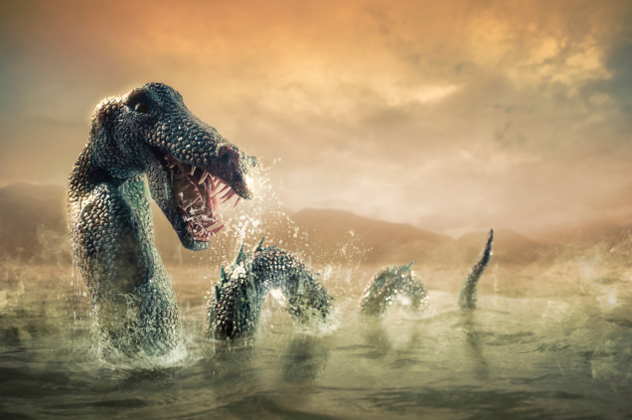
Countless Native American tribes recall stories of giant snakes, but one of the most captivating is that of the horned water serpent, an almost impossible-to-kill creature with magical scales that give hunters good luck for the rest of their lives. Legends say that the snake, called Uktena in many stories, boasts a powerful body as broad as a tree trunk, intimidating curved horns, and shining spots. Uktena can only be killed when shot in the seventh scale from its head.
According to Cherokee legend, the great warrior Aganunitsi successfully killed Uktena and brought back the shining seventh scale, which resembled a large, transparent crystal with a blood-red streak at its heart. The crystal, like a living thing, retains mysterious powers—if it’s not satiated by being coated in the blood of small game every week, it takes on the appearance of fire and goes out in search of blood, which it takes by murdering people. Legend says that the warrior who owns and feeds the Uktena crystal will enjoy a life of successful hunting, rainmaking, and romance.
7Stiff-Legged Bear
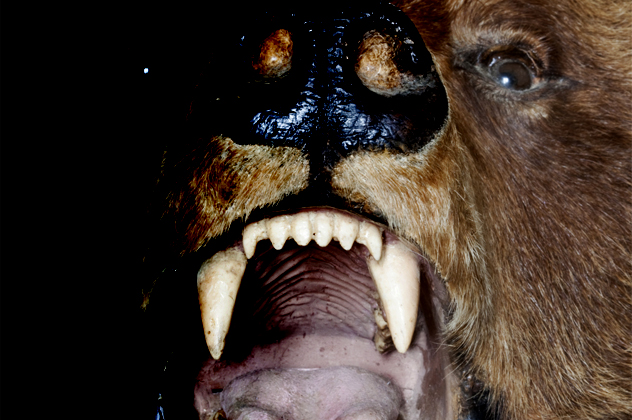
The stiff-legged bear makes an appearance in the lore of several Native American tribes. Most often called Katshituashku or Yawkwawiak, the bear is an elephant-sized version of a giant bear with a taste for human flesh. The Penobscot Nation reports that the big, shaggy mammal had a habit of leaning on trees to rest; because it was unable to bend its legs, Katshituashku wouldn’t ever be able to stand up again if it lay down.
In other narratives, the stiff-legged bear is said to have “teeth long enough to puncture seven hunters.” Some anthropologists speculate that the stiff-legged bear of legend might actually be the very real prehistoric woolly mammoth—or, rather, various versions of stories of the mammoth that were imaginatively tweaked as they were passed down through the Native Americans’ complex oral histories. It’s been speculated that members of the tribes unearthed mastodon fossils and came to the conclusion that the massive beast was a carnivorous monster because of its enormous tusks.
6Perverted Merman
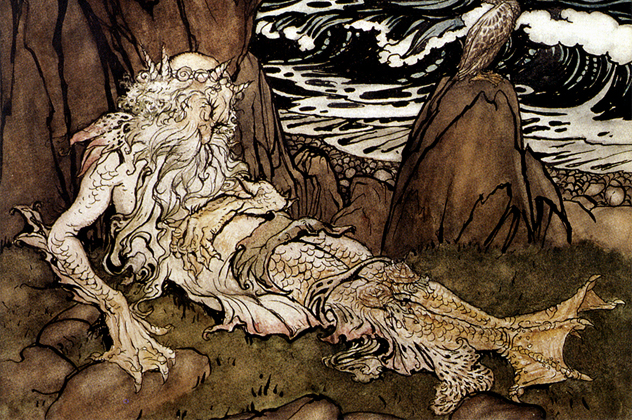
Although he isn’t a deadly evil spirit—and in reality, compared to some Native American monsters, he looks downright tame—the merman-like creature N-dam-keno-wet is disturbing in his own right. According to Abenaki mythology, N-dam-keno-wet is half man and half fish, with a slender face. He takes up residence in streams and lakes where women frequently bathe. But he doesn’t get his kicks by eating their livers or scaring the living daylights out of them—he just enjoys the sights.
Countless other Native American legends speak of mermaid-like creatures as well. In one story passed down by an Algonquin tribe, two young girls go swimming against their parents’ wishes and become snakelike and slimy from the waist down. In almost every Native American mermaid/fish-person legend, the theft of a merperson’s clothing automatically relieves the being of its magical powers.
5Flying Heads
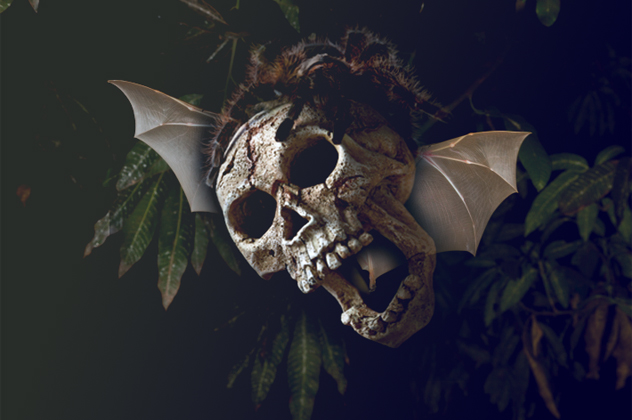
This is the stuff of nightmares. According to Iroquois legends, flying heads (or, in the native language, Kanontsistonties) are disembodied, winged heads, hungry for any human in their path. But their hunger can never be satiated; because they have no body, they’re destined to hunt for blood eternally. The origins of the flying heads vary greatly from story to story. In most cases, they’re somehow the result of a murder scene. Some legends state that those who practiced cannibalism became flying heads as punishment for their horrific behavior.
Some legends also refer to flying heads as whirlwinds (Daqqanoenyent), because they’re often accompanied by a powerful rush of whipping wind. In almost all stories, the heads are undead monsters, but they’re not entirely impossible to kill. One Iroquois story reports that a flying head accidentally ate a hearthstone along with roasted chestnuts that an old woman was preparing. That hearthstone was the last thing the flying head ever ate—it burst into flames and self-destructed, which was probably a relief to the old woman in the story.
4Camazotz
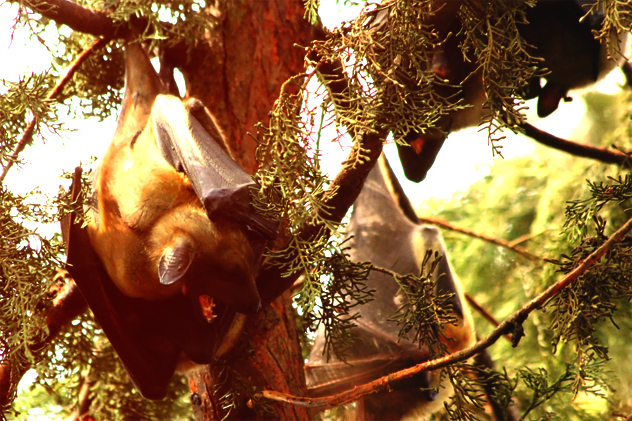
Camazotz—or Death Bat—originates in traditional Mexican culture and dates as far back as some Mayan myths. Legend has it that a small group of Maya worshiped the death bat, an anthropomorphic figure with a human body and the head and wings of a bat. Many Native American cultures venerated bats, which were almost always associated with darkness and death. Legends of a similar fearsome bat-man creature have circulated widely throughout Latin America.
Legend has it that pregnant native women in Mexico would offer sacrifices to the bat gods to ensure a healthy baby; its traditional dwelling place, a dark cave, had marked similarities to a woman’s womb. Pregnant women would venture to a specific cave in Veracruz, Mexico to offer sacrifices which they believed would ensure a healthy delivery. Some early American legends from pre-Hispanic Mexico portray the death bat as an otherworldly creature with links to both Earth and the underworld. He operates on a bridge between the heavens and the underworld and wields deadly powers. South American Arawaks believed that Camazotz would carry off villagers who ventured outside at night.
3Mishibizhiw
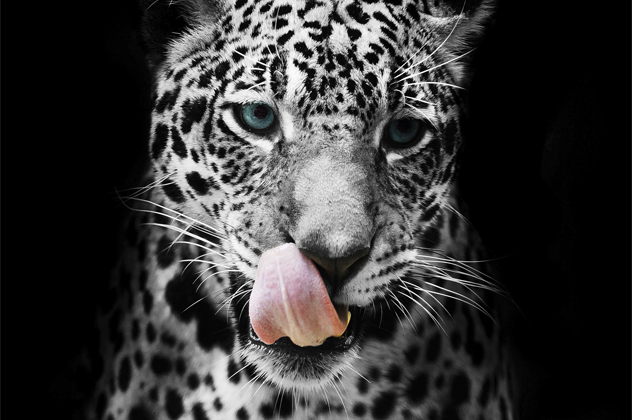
The Mishibizhiw, or underwater panther, is a creature of the underworld who lives in creeks and rivers, waiting to drown unsuspecting victims. According to a Sioux tale, the Mishibizhiw is covered in red hair. “Its body was shaped like that of a buffalo. It had one eye and in the middle of its forehead was one horn. Its backbone was just like a cross-cut saw; it was flat and notched like a saw or cogwheel.” Because of the creature’s characteristic dorsal fins and deadly, spiked tail, some have speculated that the Mishibizhiw is none other than the prehistoric stegosaurus.
A Chippewa tale of an underwater panther reports that the creature lived on an island of mud in a lake that separated two tribal villages. The villagers usually avoided the island because of an evil spirit, but on one festival occasion, two girls crossing the lake came across the underwater panther. The creature flicked its tail at the boat as if to overturn it, so the girl took a swipe at it with an oar. The oar cut a piece right off the panther’s tail, which remained in the boat as a solid hunk of copper and brought them good luck in fishing and hunting for the rest of their lives.
2The Owl-Woman-Monster
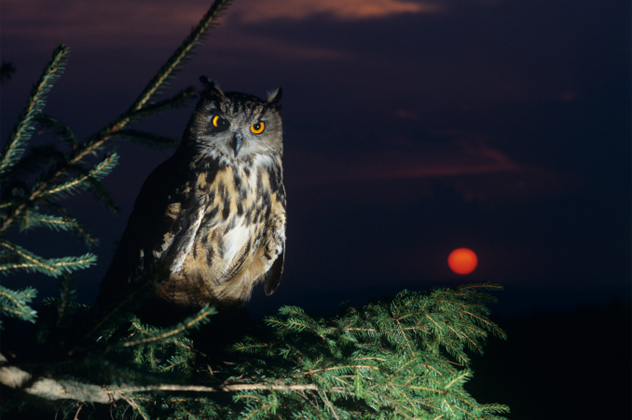
A Yakama tribesman tells the story of a race of monstrous owl-women who lived in caves. They hunted all the local tribes, but preferred the tastier flesh of children. They also fed on snakes, rats, lizards, and frogs, which were considered the most inedible of animals. The monster women were greatly feared and were considered some of the most dangerous beings on Earth. After one of the owl-women drowned, her eye was used create the entire species of owls, which represent death almost universally across Native American tribes.
Apache legend speaks of “Big Owl,” a man-eating ogre that often functions as a bogeyman figure in children’s stories. More recently, eyewitnesses from southern Texas and Mexico have reported an owl-monster called La Lechuza, which is often seen in connection with deaths and unusual, unexplained events. The Lechuza legend is as alive as ever today. Residents along the Texas-Mexico border still report seeing the ominous owls before car trouble or other strange, unexplained events. Legend has it that the Lechuza is really a witch or the spirit of an annoyed woman who can choose to turn into an owl at will.
1Cannibal Dwarves
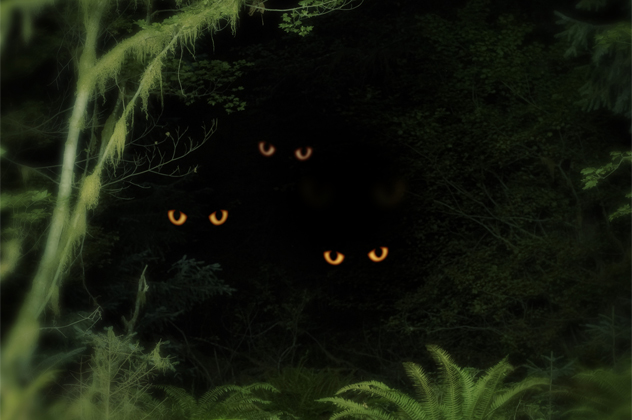
Cannibal dwarves have a long oral history among the Arapaho, Gros Venture, and Cheyenne Nations. Legends report that these little people are bloodthirsty, child-sized creatures. Also known as Teihiihan, which means “strong” in the Arapaho language, cannibal dwarves surprisingly fierce fighters who are fast enough to outrun an Arapaho warrior.
While cannibal dwarves might be insanely fast and strong, they’re also a bit dense. According to one story published in the Handbook of Native Mythology, a warrior was captured by a cannibal dwarf, so to delay the inevitable, he tried to strike up a conversation. Noticing dwarf hearts hanging on the walls around him, the warrior asked what the gruesome organs were. The dwarf told him that they were the hearts of his relatives, who were out hunting at the time. The warrior then pierced the hearts one by one. The dwarf wasn’t sharp enough to realize that piercing those hearts would kill his family. With a final stroke, the warrior pierced the heart of the dwarf who was holding him captive last, and the dwarf who wanted to eat him immediately dropped dead.
Steffani is a freelance writer and coffee addict living on the island of Guam. She’s a self-confessed grammar Nazi, but tries not to let too much bookishness get in the way of scuba diving, hiking, and climbing on things. Steffani blogs about life in Guam at OriginalFootprints.com.


